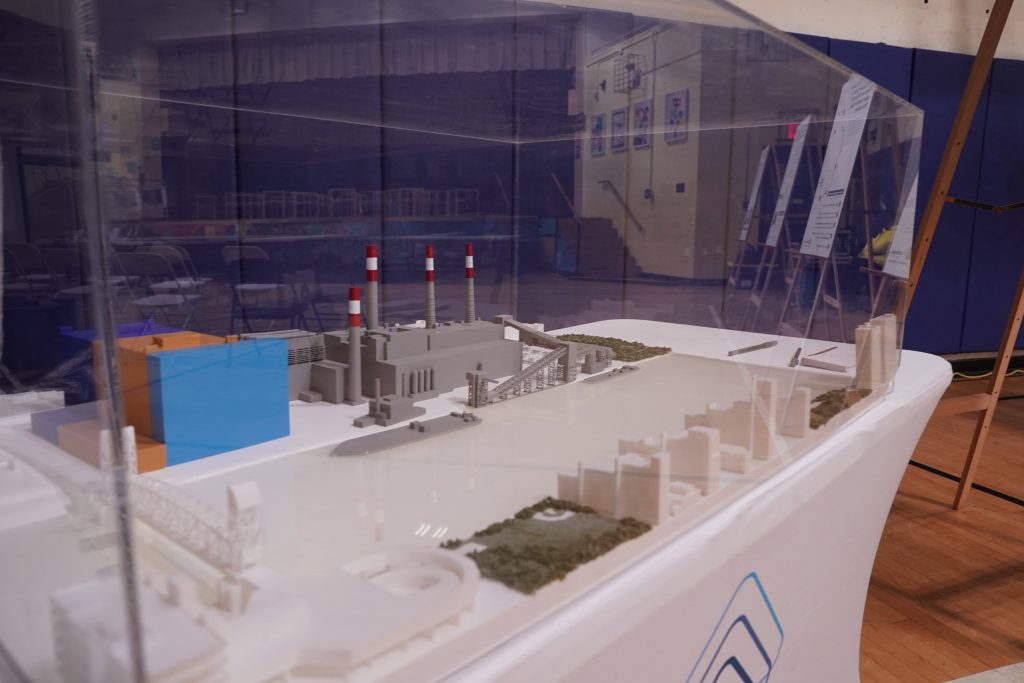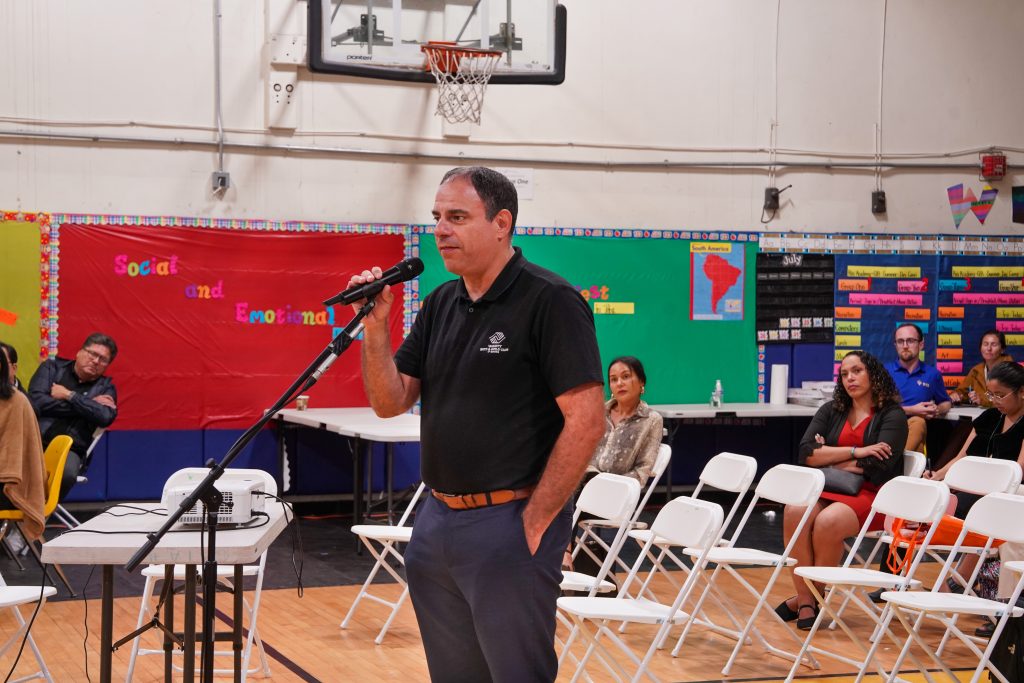
A physical rendering of the updated Ravenswood Generating station. The additional buildings will house convertors and necessary maintenance facilities.
By Jean Brannum | jbrannum@queensledger.com
The Ravenswood Generating Station may become a hub for offshore wind power after many members of the community show support at a public meeting.
At the Jacob Riis Settlement Houses on July 24, staff members from Rise Light and Power, the company that owns the station, talked with residents about the economic and natural impact of the wind farm. The wind farm will provide about 20% of power if it works at full capacity. The project is called the Queensboro Renewable Express.
In order to run the energy from the farm to the station, an 18.5-mile pair of cables will need to be installed connecting the two locations.
Running cables of this length on the seabed floor is more than a typical plug-and-play. The cables, which together are 12 inches wide and six inches tall, follow a path that minimizes impact on the ecosystems and protects cables from large ships that frequent New York City waters.
The route starts in federal waters off the coast of Breezy Point in Queens and runs to the northeast coast of Staten Island. Then, the cable straddles the New Jersey state line before running up the East River to Ravenswood. The energy would provide electricity for over two million households. A remote vehicle will bury the cables between two and fifteen feet under the seabed.
This public meeting was part of the Article VII certification process. Article VII is a public service law that mandates a review of new electricity transmission facilities’ environmental impact. The New York Public Service Commission makes the final decision, but members of the community can make comments publicly and in writing.

Variety Boys and Girls Club CEO Constas Constantinides states his support for the project
Seven meeting attendants spoke in favor of the project. Former City Councilmember and CEO of the Variety Boys and Girls Club in Queens, Costas Constantinides, said that he sees the impact of the station on the families he works with who have asthma due to the pollution.
“It is time to break the cycles of pollution, hereditary pollution in our neighborhoods. It’s time to ensure in this just transition that we preserve good jobs and create the opportunity for the neighborhood.”
Many community members also expressed the need for the project to bring jobs to the area. Lenore Friedlaender from Climate Jobs New York, said that many of the current workers for the generating station could be re-trained to work for the green power plant. Friedlaender is also part of the Mayor’s Office of Workforce Development and the Assistant to the President of 32BJ SEIU.
The Ravenswood station has already received some major changes and will continue to as the wind farm construction process continues. The large steam generators that have towered over the area since the 60s have been replaced. The 17 gas generators or “peakers” have been made defunct one by one until 2023. A gas generator was installed in 2000 to replace the lost energy generation.
The project also has support from some residents of the NYCHA houses in the area. Vice President of the Ravenswood Houses Residents Association Christina Chaise supports the idea of sustainable communities but hopes the money will go back into NYCHA.
“I wonder how we can use that funding to preserve public housing. As we know, privatization has been an option for NYCHA. It would be a creative resolution if we can find other ways to fund our public housing.”
Chaise talked about how she was unable to get her counter repaired due low stock of sinks in her complex. Like other NYCHA establishments, the area around her apartment has an unsafe lack of lighting. She hopes the revenue from the project can fix these problems.
The project is part of the Renewable Ravenswood project, which aims to turn the energy complex into a green energy center. This project is part of the goal. The projects also aim to decrease pollution. In the area, which includes Jacob Riis Settlement Houses and Queensbridge Houses, about 15% of adults have asthma. It is commonly referred to as “Asthma Alley.”
The Queensboro Renewable Express projects the application for Article VII will be approved in 2025. If approved, then construction will begin between 2026 and 2027, and the plant will generate its first watts of electricity in 2030.





